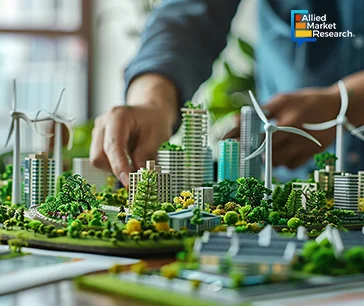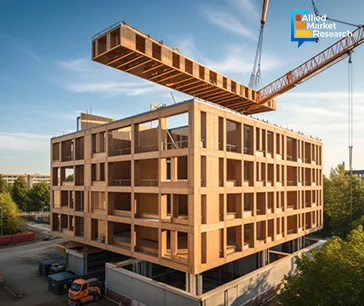Table Of Contents
- Rise in Green Building Practices – A Sustainable Shift
- Growth in Digital Transformation – Leveraging Modern Technologies
- Offsite Construction and Prefabrication – Promoting Efficient Building Methods
- Smart Packaging – Transforming Packaging Industry with Sustainability
- On-Site 3D Printing – A New Aspect in Designing Modern Buildings
- Concluding the Growth Story of the Construction and Manufacturing Domain

Sonia Mutreja

Koyel Ghosh
Construction and Manufacturing Sector: Top 5 Trends for Q2 2024 Unlocking Promising Opportunities in the Domain

The construction and manufacturing sector is one of the major sectors across the globe, significantly influencing economic growth and the evolution of infrastructure projects. This domain is intrinsically linked with providing materials, components, and equipment necessary for construction, and carrying out numerous construction projects for creating the physical infrastructure needed for manufacturing facilities and distribution networks.
Over time, top manufacturers have incorporated advanced technologies and production techniques to craft a diverse range of products, ranging from automobiles and electronics to consumer goods and industrial equipment. Moreover, the increase in emphasis on the adoption of sustainable practices and stringent environmental regulations are shaping the sector, driving a shift toward eco-friendly materials and processes. Along with this, some promising trends in the second quarter of 2024 are expected to transform the sector with extensive opportunities. Allied Market Research has published an in-depth study on groundbreaking trends, spearheading their role in revolutionizing the dynamics of the domain.
Rise in Green Building Practices – A Sustainable Shift
Nowadays, sustainability has increasingly become a priority in construction and manufacturing. Green buildings help reduce negative impacts on the environment by using less water, energy, and other natural resources, employing renewable energy sources and eco-friendly materials, and reducing emissions and waste generation. The implementation of green building measures helps stakeholders gain several economic benefits. Better buildings are more attractive to business owners and occupants for their environmental benefits, improved comfort, higher efficiency and less water, and less operating costs. Because of these benefits, builders are actively embracing environmentally friendly construction methods to reduce carbon footprints and meet regulatory requirements. Although the concept of green buildings originated in the commercial sector, now its emphasis is growing in the residential sector too. The increased public awareness and interest in this industry is creating higher demand for energy-conserving materials and other solutions for residential buildings.

Growth in Digital Transformation – Leveraging Modern Technologies
The construction and manufacturing industry is undergoing a digital transformation by adopting modern technologies such as Building Information Modeling (BIM), drones, virtual reality (VR), and augmented reality to enhance project planning, design, and execution. BIM is an intelligent, 3D model-based tool that provides a digital representation of a facility’s physical and functional aspects. This kind of representation is going to enable builders with increased insight for space’s planning, construction, design, and management. On the other hand, VR has emerged as an immersive technology which creates a simulated environment for users to interact with, transforming the way builders design, plan, and execute construction projects. This technology has the potential to enhance digital visualization, streamline project planning, improve training, and even facilitate remote project inspection. Such digital tools are going to improve collaboration and increase efficiency, leading to cost savings and better project outcomes.
Offsite Construction and Prefabrication – Promoting Efficient Building Methods
In the ever-evolving world of construction, off-site construction and prefabrication have emerged as a comprehensive approach that includes a range of methods for creating building components away from the actual construction site. According to the National Institute of Building Sciences (NIBS), offsite construction involves planning, designing, fabrication, and assembly of a building at a location other than the actual area. Unlike traditional construction, offsite construction is less time consuming, safe, cost-efficient, and flexible. On the other hand, prefabricated components and modular construction techniques enable faster product delivery, reduced waste, and improved quality control. For modern buildings, offsite construction is going to represent a sustainable and innovative approach, offering speed, efficiency, and quality in construction projects.

Smart Packaging – Transforming Packaging Industry with Sustainability
With the rapid growth of e-commerce, further accelerated by the COVID-19 pandemic, the packaging industry has experienced a surge in demand for smart packaging materials. Now, as more consumers shop online, there is an increased need for protective and sustainable packaging solutions to ensure safe delivery of products at customer’s doorsteps. The food & beverage sector is one of the largest consumers of packaging materials. As global population grows, there is a continuous demand for innovative packaging solutions that extend shelf life, enhance product freshness, and improve convenience. This growth in the food and beverage domain is driving demand for a wide range of packaging materials, including flexible packaging, rigid containers, and sustainable alternatives. Smart packaging

On-Site 3D Printing – A New Aspect in Designing Modern Buildings
The rise of on-site 3D printing in the construction industry is revolutionizing the way buildings and infrastructure are designed and constructed. This innovative technology allows for the rapid fabrication of complex architectural elements and structural components directly at the construction site, offering numerous advantages over traditional construction methods. This technology enables architects and designers to create highly customized and intricate designs that would be impossible to achieve with traditional construction techniques. Utilizing on-site 3D technology enhances workflow efficiency and boosts client satisfaction by effortlessly crafting intricate patterns like organic shapes and curved walls. This capability ensures enhanced design creativity and architectural expression.
Concluding the Growth Story of the Construction and Manufacturing Domain
The construction and manufacturing domain is anticipated to experience prominent growth in the forthcoming years due to the growing emphasis of stakeholders in the adoption of sustainable practices. Furthermore, the societal shift toward sustainable living to foster healthier indoor environment, enhanced comfort, and greater quality of life is expected to increase the demand for eco-friendly building materials and closed-loop manufacturing processes in the future. Additionally, the rise of industry 4.0 such as IoT, AI, and robotics is expected to open new possibilities for the sector in the upcoming years. Besides, the trends highlighted by Allied Market Research for the quarter of Q2 2024 are going to help several industries in this domain expand their offerings by making new approaches.
For more insights into the construction and manufacturing industry, contact our esteemed analysts today!

